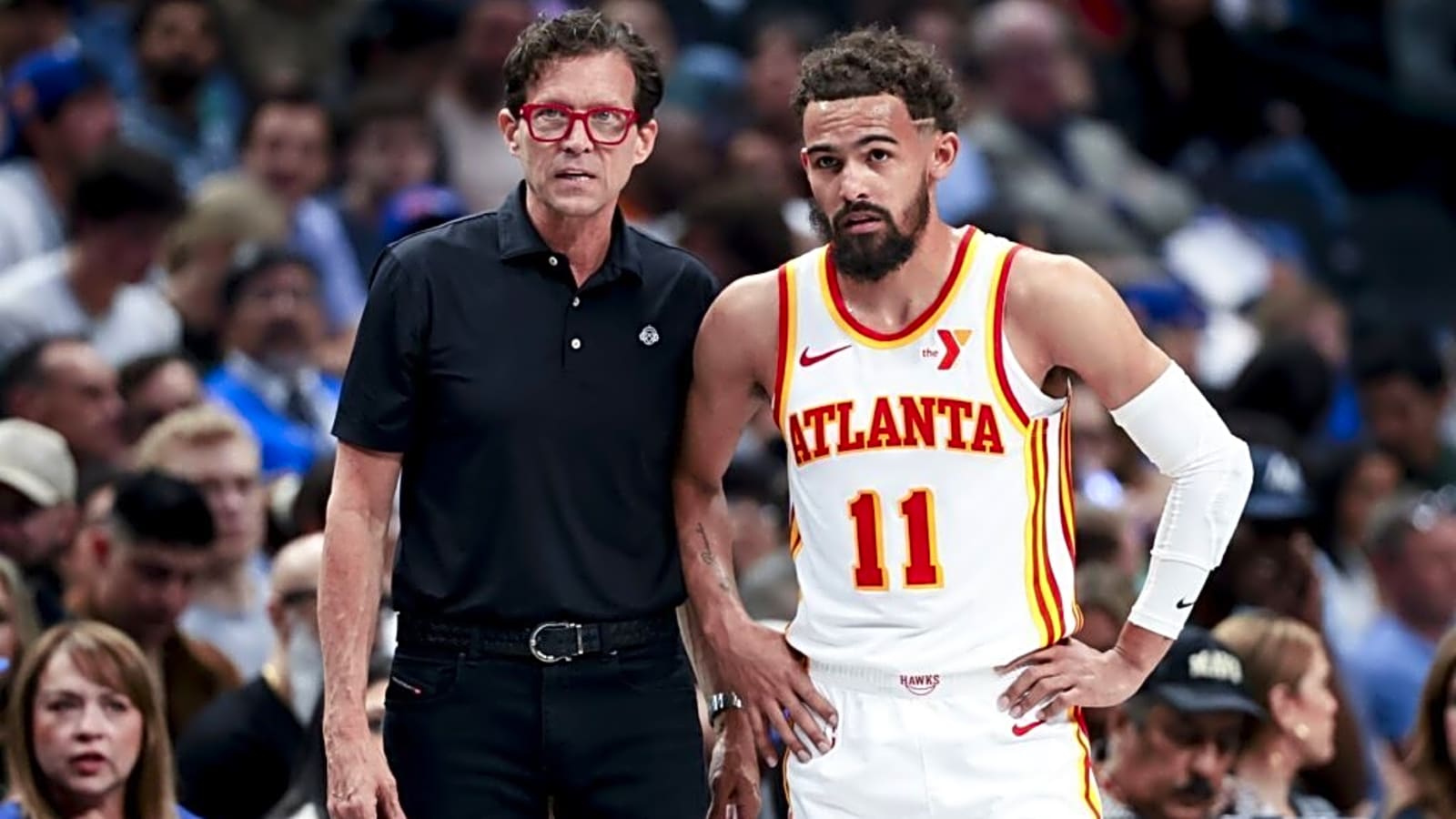
Last season, the Atlanta Hawks struggled to put together two-way lineups after Jalen Johnson’s season-ending shoulder injury. Oftentimes, lineups leaned too far defensively or offensively focused. General Manager Onsi Saleh rectified this issue after acquiring Kristaps Porziņģis, Nickeil Alexander-Walker, and Luke Kennard. All three additions give Atlanta much-needed shooting, while Porziņģis and Alexander-Walker make big impacts defensively.
Hawks Have Lineup Versatility After New Additions
Porziņģis Can Play Next to All of Atlanta’s Frontcourt Rotation
Hawks head coach Quin Snyder experimented with playing Onyeka Okongwu and Clint Capela together this past season. While that combination got stops defensively, their lack of shooting hindered the Hawks from scoring. Porziņģis solves this concern. He shot 41.2% from deep on six attempts per game for the 2024-25 campaign. Coming from the Boston Celtics, one of the most prolific three-point shooting teams in NBA history, Porziņģis will have no trouble fitting into Snyder’s offense.
The 7-foot-2 center averaged 1.5 blocks per game last season through his weakside rim protection and on-ball post defense. However, he struggles to guard in space due to his lack of lateral quickness. Okongwu does not. He excels at switching onto guards and defending at the level of the screen. His mobility offensively also makes for effective dribble hand-offs with Trae Young. Whether Okongwu and Porziņģis start together remains to be seen, but they can certainly share the floor in regular rotation minutes.
Mouhamed Gueye won the starting power forward position after Johnson went down. He played next to Okongwu, improving his rebounding and weakside rim protection to close last season. However, opposing teams left Gueye open, daring him to shoot. He shot 25.9% from outside on 2.5 attempts per game. Snyder often had to replace him with sharpshooter Georges Niang, but he struggled defensively. Porziņģis gives Atlanta another deadeye shooter without sacrificing length, size, and rim protection next to Johnson, Okongwu, and Gueye.
Hawks Have Many Combinations on the Perimeter
Alexander-Walker and Kennard give Atlanta great size and shooting. Alexander-Walker took 4.5 threes per game and converted 38.1% of them for the Minnesota Timberwolves last season. Kennard is one of the best shooters in NBA history. He only shot below 40% from deep two times across his eight-year professional career.
The active career NBA leader in 3PT percentage is…
Luke Kennard
(3rd all-time) https://t.co/7RDxVkQXOT
— Brad Rowland (@BTRowland) June 30, 2025
At 6-foot-5, both players can play either guard spot with or without the ball. Kennard offers more playmaking and pick-and-roll operation, while Alexander-Walker creates havoc on defense while still being a threat in catch-and-shoot situations.
Atlanta’s guard rotation projects to include Young, Dyson Daniels, Alexander-Walker, Kennard, and Kobe Bufkin. Bufkin, while limited to only 27 games across two seasons, showed flashes of defensive potential. The Hawks want to surround their star point guard with size. Young is the only player under 6-foot-4 in the quintet. In some situations, Daniels and Alexander-Walker could even play at small forward.
Snyder likely experiments with many combinations in the preseason to finalize his guard rotation for the 2025-26 campaign. If Young is off the floor, Kennard can run the offense with Daniels, Bufkin, and Alexander-Walker for defensive support. If Atlanta needs a three in late-game situations, they can run Young, Kennard, Alexander-Walker, Zaccharie Risacher, and Porziņģis. If the Hawks need a stop, Alexander-Walker, Daniels, Risacher, Johnson/Okongwu, and Porziņģis will do the job.
Atlanta is equipped to make a run in an open Eastern Conference next season. If the Hawks stay healthy, their depth and versatility can take them far.
More must-reads:
- Wizards may have gotten next breakout star in trade with Rockets
- Mike Brown receives enormous contract from Knicks
- The 'Leading scorer by NBA franchise' quiz
Breaking News
Trending News
Customize Your Newsletter
 +
+
Get the latest news and rumors, customized to your favorite sports and teams. Emailed daily. Always free!








